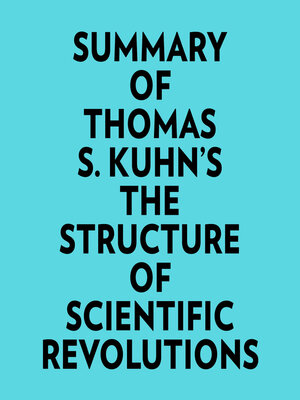Summary of Thomas S. Kuhn's the Structure of Scientific Revolutions
audiobook (Abridged)
By Everest Media

Sign up to save your library
With an OverDrive account, you can save your favorite libraries for at-a-glance information about availability. Find out more about OverDrive accounts.
Find this title in Libby, the library reading app by OverDrive.



Search for a digital library with this title
Title found at these libraries:
| Loading... |
Please note:This audiobook has been generated using AI Voice. This is a companion version & not the original book. Sample Book Insights: #1 The scientific method is cumulative, and it progressess towards the truth. However, a revolution changes the domain, and the language in which we speak about some aspect of nature. It redirects to a new portion of nature to study. #2 After Structure, American scholarship in philosophy and the sciences became dominated by sociological studies of science. This development was not welcomed by many younger workers, who felt that Kuhn had denigrated the importance of truth in science. #3 The book changed the image of science, and it forever changed the way people viewed science. It changed the way people viewed science because it undermined all the positivist doctrines implicit in the Vienna Circle project. #4 The essay that follows is the first full published report on a project that I had started years ago. It was a shift from physics to history of science, and then back to the more philosophical concerns that had initially drawn me to history.






